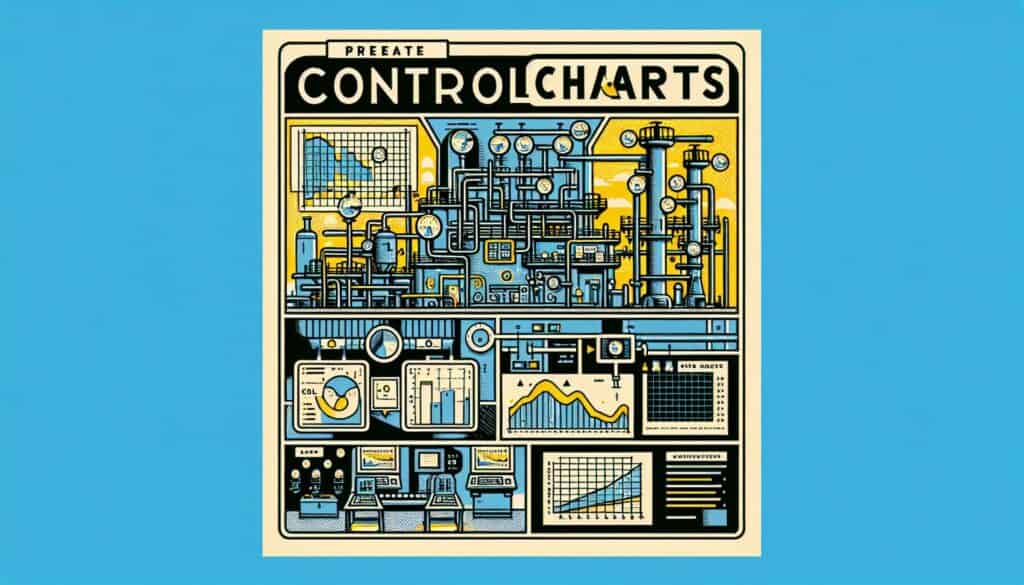Para evitar la fabricación de productos no conformes mediante la supervisión de los ajustes del proceso al inicio y durante las ejecuciones, utilizando zonas más amplias que los gráficos de control.
- Metodologías: Ingeniería, Calidad
Gráficos de control previo

Gráficos de control previo
- Mejora continua, Prevención de errores, Manufactura esbelta, Capacidad de proceso, Mejora de procesos, Eficacia de la producción, Seguro de calidad, Control de calidad, Control estadístico de procesos (CEP)
Objetivo:
Cómo se utiliza:
- Una sencilla herramienta estadística en la que los operarios comprueban un pequeño número de piezas consecutivas comparándolas con los límites de especificación divididos en zonas verde (centro), amarilla (precaución) y roja (parada). Los ajustes se realizan en función de la zona en la que se encuentren las piezas.
Ventajas
- Simple to understand and use by operators; Provides immediate feedback on process stability; Focuses on defect prevention rather than just detection; Requires less data collection than traditional SPC charts.
Contras
- Menos riguroso desde el punto de vista estadístico que los gráficos de control Shewhart; puede no detectar con la misma eficacia los pequeños cambios del proceso; depende en gran medida de la disciplina del operario y de una interpretación correcta.
Categorías:
- Fabricación, Calidad
Ideal para:
- Providing a simple, operator-driven method for control de procesos at the point of manufacture, particularly useful for short runs or where full SPC is impractical.
Pre-Control Charts serve as an effective tool for quality management and can be particularly advantageous in industries such as automotive, electronics, textiles, and food processing, where production often involves a significant number of distinct parts produced in short runs. This methodology is often utilized during the manufacturing phase, particularly in environments where rapid adjustments are necessary due to fluctuations in production or when implementing new processes. Operators and front-line workers, who are familiar with the production intricacies, typically initiate this approach, allowing for prompt decision-making based on real-time data. The simplicity of Pre-Control Charts makes them accessible for users without advanced statistical training, providing immediate visual cues through a straightforward color-coded system that delineates acceptable and unacceptable performance. This enables teams to engage more actively in the monitoring process, fostering a culture of defect prevention rather than merely waiting for issues to be identified through more extensive control estadístico de procesos (SPC) mechanisms. Since the methodology requires less rigorous data collection, it allows companies to allocate resources efficiently, minimizing downtime and increasing responsiveness to quality issues. Furthermore, firms may find that integrating Pre-Control Charts into their workflows not only improves process reliability but also enhances the overall skill set of their workforce, empowering operators to take ownership of quality outcomes while effectively collaborating across departments for continuous improvement initiatives.
Pasos clave de esta metodología
- Define the specification limits for the product.
- Determine the number of consecutive parts to be checked.
- Inspect each part against the defined limits.
- Classify the results into green, yellow, or red zones based on specifications.
- Implement immediate adjustments if parts fall into yellow or red zones.
- Continue monitoring the process and inspecting subsequent parts.
Consejos profesionales
- Ensure clear criteria for green, yellow, and red zones, involving operators in the definition process to enhance ownership.
- Implement regular training on reading and interpreting Pre-Control Charts to maintain operator engagement and competence.
- Utilize historical data to set realistic specification limits, allowing for continuous adjustments based on verified performance trends.
Leer y comparar varias metodologías, recomendamos el
> Amplio repositorio de metodologías <
junto con otras más de 400 metodologías.
Sus comentarios sobre esta metodología o información adicional son bienvenidos en la dirección sección de comentarios ↓ , así como cualquier idea o enlace relacionado con la ingeniería.
Contexto histórico
1962
1970
1972
1980
1980
1986
1986
1960
1963
1970
1980
1980
1980
1986
1987
(si se desconoce la fecha o no es relevante, por ejemplo "mecánica de fluidos", se ofrece una estimación redondeada de su notable aparición)















Publicaciones relacionadas
Calculadora de METS a calorías
Metaanálisis
Asignación de mensajes
Diagramas de modelos mentales
Fuerzas de empuje y tracción máximas admisibles
Planificación de necesidades de material (MRP)